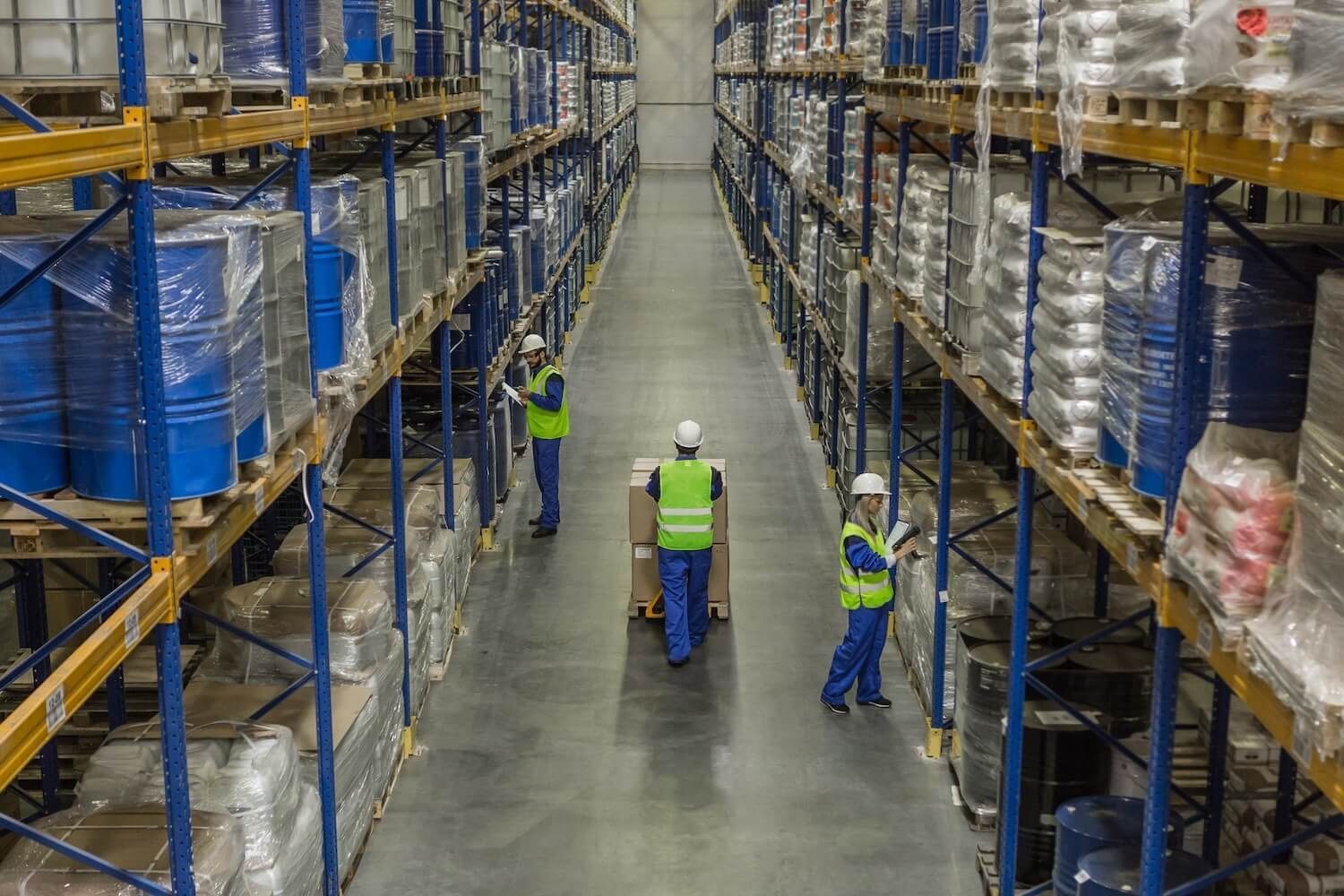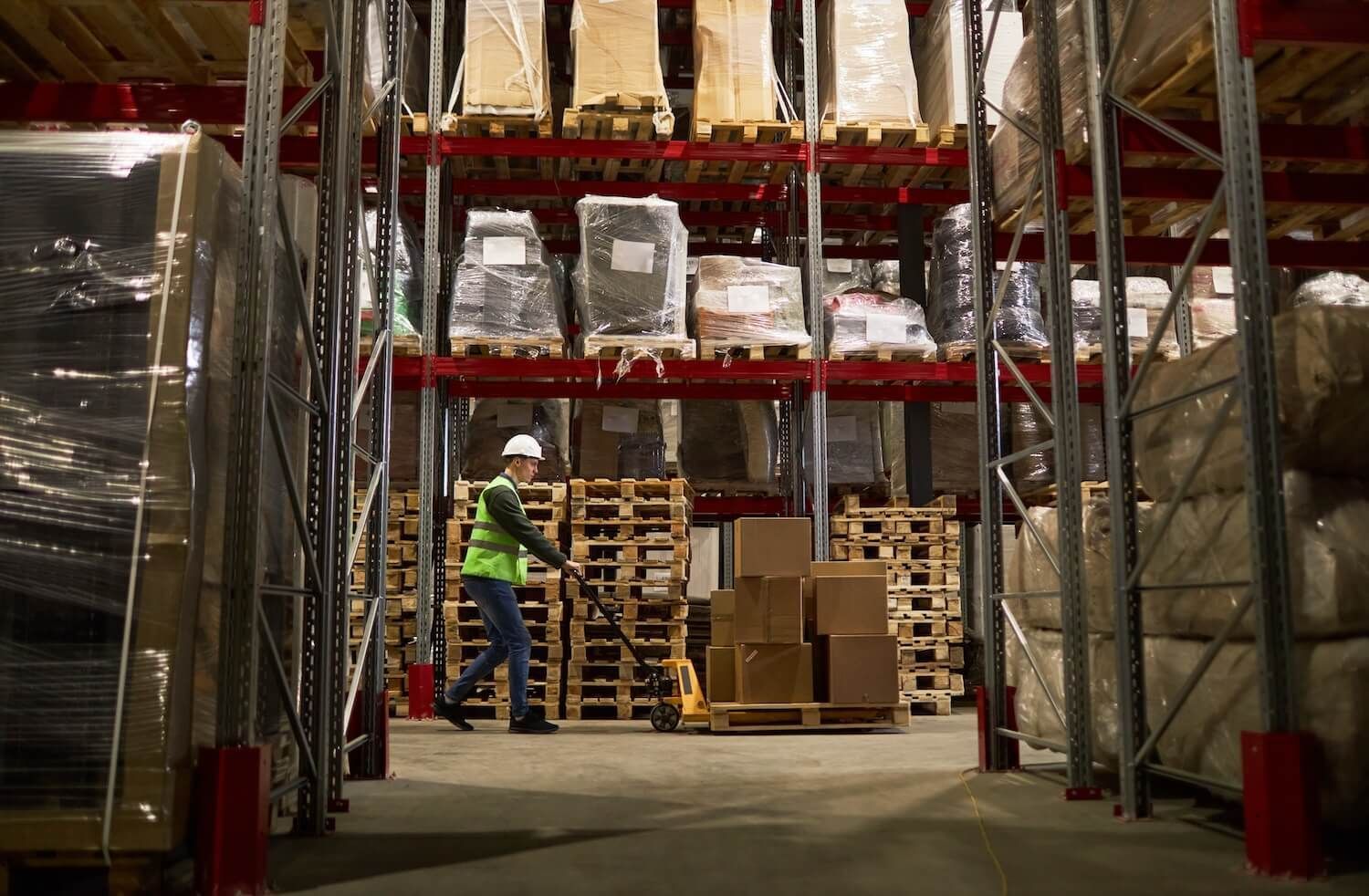Adapt to Warehousing Uncertainty: Strategic Flexibility with Short-Term Warehousing

Adapt to Uncertainty: The Quiet Strength of Short-Term Warehousing
The digital notification blares, an insistent siren cutting through the calm of an early morning. A headline flashes: "New Tariff Adjustments Expected to Ripple Through Supply Chains." A familiar knot tightens. Just last month, the exhilaration of a sudden surge in demand for specialized industrial components pushed existing warehouse space to its absolute limits. Boxes were stacked precariously high, aisles were narrowed to mere pathways, and the hum of forklifts was a constant, stressed drone. Now, this. A ripple effect, you know, will soon hit carefully balanced inventory, creating unpredictable ebbs and flows—perhaps more product stuck in transit, or a sudden, unexpected glut needing a home, fast.
Like countless businesses and supply chain managers, you understand the silent, gnawing anxiety that accompanies uncertainty. It isn't just the big, headline-grabbing shifts like trade wars, though those are certainly impactful. It's the everyday, less dramatic, but equally disruptive tremors: a key supplier’s unexpected delay, a sudden market trend, a last-minute order from a crucial client, or even just the persistent, yet often elusive, rhythm of seasonal demand that inevitably outstrips permanent capacity.
You remember the sleepless nights, the frantic phone calls, the desperate scramble for space. The pressure to make long-term commitments for short-term problems feels like a cruel joke. Every lease signed, every square foot of unused space, feels like a drain on resources that could be better invested in growth, innovation, or simply, breathing room. The traditional warehousing model, with its ironclad leases and predictable, yet often inflexible, spaces, feels increasingly like an anchor in a rapidly moving current. It’s a relic of a more stable era, ill-suited for the dynamic, often turbulent, waters of today’s global economy.
The Shifting Sands of Supply and Demand: A Modern Conundrum
The world has fundamentally changed. The linear, predictable supply chains of yesteryear have given way to intricate, interconnected networks, constantly susceptible to disruption. Geopolitical tensions, volatile market demands, unforeseen natural events, rapid technological advancements—each of these factors can send shockwaves through your inventory.
The Unpredictable Nature of Modern Business
Gone are the days when you could reliably project demand years in advance and sign leases for corresponding warehousing space with absolute confidence. Today’s business environment is a mosaic of unforeseen circumstances:
- Global Trade Volatility: Trade wars, sanctions, and shifting international relations can instantly alter the cost and flow of goods, leading to either an excess of inventory you need to hold or a deficit you need to quickly backfill.
- Rapid Market Shifts: Consumer preferences can pivot overnight, fueled by social media trends or unexpected innovations, creating sudden surges or sharp declines in demand for specific products.
- Supply Chain Disruptions: A single event—a factory fire, a port closure, a labor dispute—anywhere in the world can ripple through your entire supply chain, leaving you with products stranded or requiring immediate rerouting and temporary storage.
- E-commerce Acceleration: The rapid growth of online retail means businesses must be prepared for larger, more frequent inventory fluctuations, as customer expectations for speed and availability intensify.
The Costly Traps of Traditional Warehousing
Consider the dilemma: you need space, often right now, but you don't know for how long. Committing to a multi-year lease for a fluctuating need is like buying a mansion to house a suitcase. It’s financially inefficient and strategically stifling. Yet, the alternative—turning away orders, delaying shipments, or worse, incurring hefty demurrage charges for goods stranded without a home—is equally unpalatable. This isn’t just about space; it’s about agility. It’s about protecting your cash flow, preserving your market reputation, and ultimately, safeguarding your ability to respond to opportunity, not just react to crisis.
This is the silent struggle that keeps countless business leaders awake. How do you maintain operational efficiency and responsiveness when the very ground beneath your inventory is shifting? How do you avoid the costly trap of over-commitment while ensuring you never miss a beat when unexpected opportunities or challenges arise?
Unlocking Agility: The Strategic Advantage of Short-Term Warehousing
Imagine a solution that moves with you, not against you. A solution that expands and contracts as your needs dictate, without penalty, without complex negotiations, and without the burdensome financial commitment of long-term leases. This isn’t a utopian vision; it’s the strategic reality offered by short-term commercial warehousing.
Think of it as on-demand storage, precisely when and where you need it. This isn't about finding a dusty corner in a friend's garage; it's about accessing professional, secure, and fully equipped warehousing facilities designed for temporary warehousing or flexible storage. Whether you’re dealing with a sudden influx of goods due to a cancelled order, managing inventory overflow from a successful sales promotion, or simply navigating the logistical complexities of a new market entry, short-term warehousing provides the immediate, scalable capacity you require.
This approach transforms warehousing from a fixed cost and a potential liability into a dynamic, responsive asset. It allows businesses to thrive in an unpredictable world.
Adapting to Economic Shifts and Global Realities
- Trade War Adjustments: When trade policies shift or new regulations emerge, you can adjust your inventory levels and distribution strategies without being tethered to a physical location that no longer serves your needs. Goods can be routed to a flexible storage solution closer to new markets or transportation hubs, minimizing transit times and costs. This rapid re-routing can be the difference between maintaining profitability and incurring significant losses.
- Market Entry and Expansion: For businesses looking to expand into new territories or test new distribution models, short-term commercial warehousing offers a low-risk, high-reward solution. You can establish a temporary footprint, gauge market response, and scale up or down without the prohibitive upfront investment of a permanent facility. This trial-and-error capability is invaluable for strategic growth.
- Seasonal Peaks and Valleys: Every industry experiences seasonality, but the peaks can be crushing without adequate space. Instead of signing a year-long lease for a two-month surge, temporary warehousing allows you to secure space only when you need it, optimizing your operational footprint and expenditure.
Optimizing Operations and Financial Health
- Embrace Opportunity, Not Just Mitigate Risk: Imagine a sudden, unexpected spike in demand for one of your products, perhaps fueled by a viral social media trend or a competitor's misstep. Instead of losing sales due to lack of space or scrambling for inadequate solutions, you can immediately access additional warehousing, ensuring you capitalize on every opportunity. This proactive approach turns potential missed opportunities into concrete gains.
- Optimize Cash Flow: Long-term leases tie up significant capital that could be better utilized for product development, marketing, or talent acquisition. Flexible storage minimizes overhead, allowing you to pay only for the space you use, when you use it. This financial agility is invaluable in a volatile economic climate, freeing up capital for strategic investments.
- Buffer Against the Unknown: From unforeseen supply chain disruptions to sudden changes in consumer behavior, the ability to rapidly secure additional storage acts as a crucial buffer. It prevents bottlenecks, reduces the risk of costly delays, and ensures your operations remain smooth, even when the unexpected occurs. This resilience is a hallmark of modern, agile businesses.
- Managing Inventory Overflow: Whether it's a bulk purchase to secure a better price, a cancelled order that leaves you with excess stock, or a successful product launch that exceeds all expectations, inventory overflow can quickly become a logistical nightmare. Short-term commercial warehousing offers an immediate, scalable solution to house these goods securely until they can be moved or sold.

More Than Just Space: A Strategic Partnership
The power of short-term commercial warehousing extends beyond mere square footage. It’s about partnering with providers who understand the nuances of flexible storage. These aren’t just landlords; they are logistical partners equipped to handle your inventory with professionalism and efficiency.
What to Look For in a Flexible Warehousing Partner
- Variety of Spaces and Capabilities: A truly flexible partner offers a range of options. This includes everything from:
- Pallet Positions: For businesses needing to store a few pallets of overflow.
- Dedicated Aisles or Bays: For larger, but still temporary, storage needs.
- Temperature-Controlled Environments: Crucial for sensitive goods like pharmaceuticals, certain chemicals, or food products.
- Specialized Handling Capabilities: For oversized, fragile, or uniquely shaped items.
- Advanced Security and Technology: Professional short-term commercial warehousing facilities prioritize the safety and security of your goods. Look for partners who employ robust security measures, including 24/7 surveillance, restricted access, and comprehensive insurance. Beyond physical security, advanced inventory management systems (WMS) offer real-time visibility into your stock, allowing you to track your goods with precision and confidence.
- Logistical Support and Value-Added Services: Many leading providers offer more than just storage. They become an extension of your supply chain, offering:
- Cross-Docking: Efficiently transferring goods from inbound to outbound transportation with minimal handling and storage time.
- Pick-and-Pack Services: Essential for e-commerce businesses, allowing products to be picked, packed, and prepared for direct-to-consumer shipping.
- Fulfillment Services: Handling the entire order fulfillment process, from receiving to shipping, enabling you to focus on your core business.
- Transportation Coordination: Assisting with the movement of goods to and from the warehouse, streamlining your logistics.
- Transparent and Flexible Pricing: Clear, concise pricing models are paramount. You should understand exactly what you're paying for, avoiding hidden fees and unexpected costs. The beauty of flexible storage lies in its pay-as-you-go nature, allowing you to scale up or down without penalty. This financial clarity empowers better budgeting and resource allocation.
This integrated approach means you're not just renting space; you're gaining access to a flexible extension of your supply chain infrastructure, tailored to your immediate and evolving needs. It's a strategic alliance that empowers you to respond to market dynamics with unprecedented speed and efficiency.
From Anxiety to Agility: A New Way Forward
The quiet knowledge settles in. The trade war adjustments still loom, but the knot of panic has significantly loosened. You now have a clear picture of how on-demand commercial warehousing can transform operational agility. It isn't a magic bullet for all challenges, but it's a powerful tool, a strategic lever you can pull to navigate the choppy waters ahead.
The ability to secure a few thousand square feet for three months, or perhaps even just a few weeks, without being locked into a multi-year commitment, is exactly the kind of flexibility your business needs. No more turning down critical orders because your warehouse is bursting at the seams. No more paying for space when inventory overflows or levels dip unexpectedly. It's about smart resource allocation, about preserving capital, and ultimately, about maintaining control in a world that often feels chaotic.
Imagine the relief of knowing that when the next market shift or unexpected opportunity arises, you won't be scrambling, but rather, seamlessly adapting. You won't be burdened by fixed overheads, but empowered by flexible solutions. It's a shift from reactive problem-solving to proactive strategic planning. Your internal monologue, once filled with anxieties about unforeseen disruptions and wasted resources, can now resonate with a newfound sense of confidence.
The story of your business, you realize, is no longer one of being held hostage by static infrastructure in a dynamic world. Instead, it's becoming a narrative of adaptability, resilience, and quiet strength. The ability to embrace uncertainty, not just endure it.
Your Path to Unburdened Growth
In a landscape defined by flux, your ability to adapt is your greatest competitive advantage. Don't let rigid storage solutions stifle your growth or drain your resources. Embrace the strategic flexibility that short-term commercial warehousing offers. It’s not just about finding a place for your goods; it’s about finding the freedom to innovate, to respond, and to thrive in an ever-changing world. It’s about building a supply chain that bends, but doesn’t break.
Find flexible short-term warehousing solutions to meet your immediate needs and unlock true operational agility with Razr Logistics.












 by
by